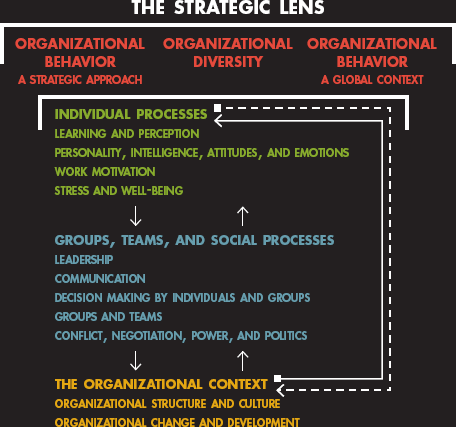Part II. Individual Processes

The chapters in Part I provided the strategic lens that is central to discussions throughout the book, and they explained how organizational diversity and the global environment affect all organizations. In Part II, we explore important concepts related to individual-level processes in organizations.
Chapter 4 explains the concepts of learning and perception. Through individual learning, associates gain the knowledge and skills they need to perform their jobs in organizations. Individual learning contributes to the value of an organization's human capital and provides the base for organizational learning, both of which are critical for organizations to capture a competitive advantage.
Chapter 5 focuses on personality, intelligence, attitudes, and emotions. Managers in organizations need to understand how each of these human characteristics affects individual behavior. Personality and intelligence are an important determinant of a person's behavior and performance and cannot be easily changed. Thus, organizations must learn how to select associates with desirable personalities and intelligence levels to maximize the value of their human capital. However, attitudes and emotions can and do vary. Attitudes and emotions affect behavior, and managers can have a significant effect on individuals' behavior by taking actions that affect their attitudes and emotions. ...
Get Organizational Behavior, Third Edition now with the O’Reilly learning platform.
O’Reilly members experience books, live events, courses curated by job role, and more from O’Reilly and nearly 200 top publishers.

